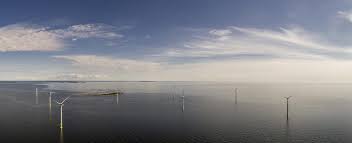
The Finnish Act on Offshore Wind Power in the Exclusive Economic Zone will clarify the regulation of projects in the exclusive economic zone, which has been deficient until now, according to Finland’s Ministry of Economic Affairs and Employment.
“The new legislation will promote a predictable and encouraging operating environment as well as smooth project development and construction. It will also make it easier to ensure that offshore wind power is compatible with other uses of the marine areas, such as maritime transport and fishing”, the Ministry said in a press release on 19 December.
The government will now start the work on identifying offshore wind areas, including performing an environmental impact assessment (SEA), with the aim of deciding on the first areas to be tendered in autumn 2025.
The government will also prepare a decree that will be issued under the new Act, which will contain the criteria for selecting the winners of tenders. The decree will be drafted so that it will enter into force before the start of the first competitive tendering.
“The Energy Authority can organise competitive tendering once the Government has decided which areas will be tendered. This will take place towards the end of 2025, at the earliest”, Finland’s Ministry of Economic Affairs and Employment states.
Under the newly enacted legislation, Finnish offshore wind tender consists of three parts: the government selecting the offshore wind areas, the Energy Authority organising the competitive tendering for the area, and the selection of the tender winner(s) which are granted the exclusive right to apply for a permit for a certain area. The permit grants the offshore wind project the right to use the area for a fixed period of time.
Among other things, the competitive offshore wind tendering model under the new Act enables the second-best tenderer to apply for an exploitation permit if the winner does not do so. A permit alone does not mean that the project will be built since other permits are required for this as well.
Finland currently has one offshore wind farm, the 42 MW Tahkoluoto off Pori on the Finnish west coast, the world’s first offshore wind farm in icy sea conditions.
In May 2024, the Finnish government rejected 16 applications for exploitation permits concerning offshore wind power in the exclusive economic zone, saying that the work on new legislation on offshore wind development was underway and that granting the rights might have had negative consequences on the guiding effects of the new act that was under preparation.
The denied applications were submitted under section 6 of the existing Exclusive Economic Zone Act in Finland and, based on that, only consents to explore a project area were granted, the Ministry of Economic Affairs and Employment said in May, adding that offshore wind projects required consent for the actual construction work under section 7.
The Ministry said at the time that the existing EEZ act did not take into account the special characteristics of offshore wind power and that the government’s aim was that the decisions on offshore wind projects in Finland’s EEZ be based on clear rules, which would be defined in the new offshore wind legislation.